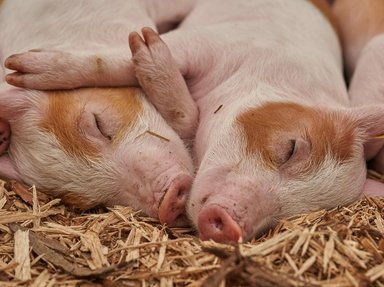Quiz Answer Key and Fun Facts
1. Which of the following swine breeds has the same markings and the same name as a famous red and white breed of cattle?
2. Which of the following is a small statured breed of swine that shares its name with two countries and a member of the rodent family that is often kept as a household pet?
3. Which of the following is a lop-eared breed of British origin that is black in color and named for its distinctive white strip of various widths across its shoulders?
4. A rare breed of swine that has proved invaluable to scientists in developing a deeper understanding of human diabetes comes from which small island off of the Georgia coast in the United States?
5. A rare breed of swine is named for the Native American nation that raised them. The nation was originally in the southeast United States and was the first Native American nation forcibly resettled into what is now Oklahoma during the trail of tears. Which Native American nation was this?
6. One rare breed of American swine is named for its unique single toed foot that more closely resembles an equine foot than the split toes of most swine breeds. Which of the following breeds is this?
7. This red breed of swine with upright ears shares its name with a city in England and a city in New South Wales, Australia. What is it?
8. Which of the following swine breeds is of English origin, one of the oldest pedigreed breeds of swine and must have at least one spot on its body to be eligible for registration?
9. Red wattle pigs are a derived from heritage stock but were not identified as a breed until the 1970s. They are named for what unique physical characteristic that is not shared by most swine breeds?
10. This breed of swine with British origins was once named the lop eared black, but because of their large frame size and rapid rate of growth they were renamed what?
Source: Author
kuecks
This quiz was reviewed by FunTrivia editor
guitargoddess before going online.
Any errors found in FunTrivia content are routinely corrected through our feedback system.

